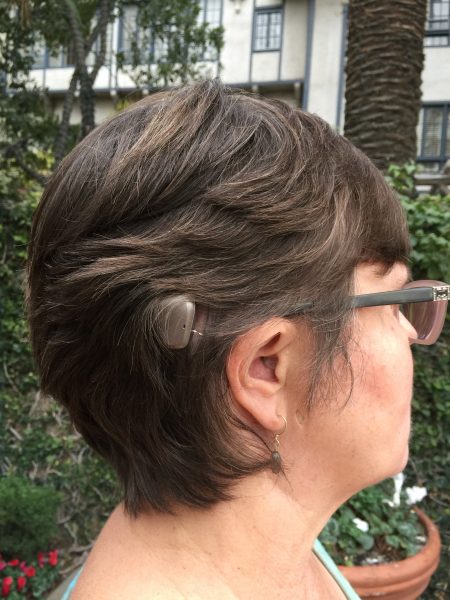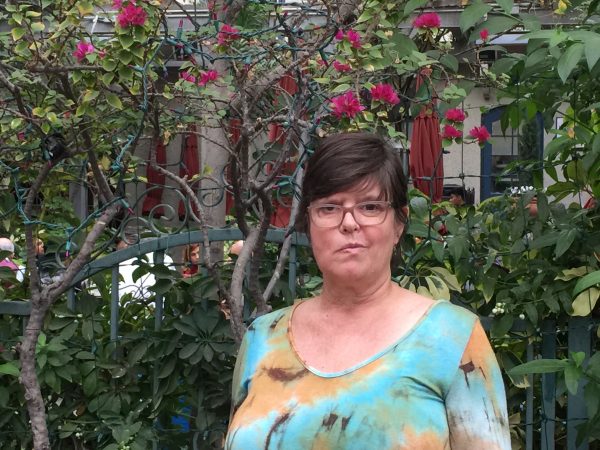Are you curious what acoustic neuroma symptoms are? Has gradual hearing loss or tinnitus been affecting your hearing? Learn more about the Cochlear™ Baha® System* as a solution to treat your single-sided deafness (SSD).
What are some common acoustic neuroma symptoms?
An acoustic neuroma is a benign and usually slow-growing tumor that develops on the hearing nerve that connects the inner ear (cochlea) to the brain. Pressure from this tumor can cause hearing loss in the affected ear. Symptoms are different for every patient, but some common ones include:
- Hearing loss that is typically gradual (occasionally sudden) that occurs or is worse on one side1
- Ringing (also known as tinnitus) in the affected ear2
- Loss of balance3
- Dizziness4
- Facial numbness and occasionally weakness/loss of movement of muscles5
Acoustic neuromas and single-sided deafness
 An acoustic neuroma is one common cause of single-sided deafness. Hearing loss from an acoustic neuroma is due to the surgical removal of benign tumor(s) developing on the nerve that connects the ear to the brain.
An acoustic neuroma is one common cause of single-sided deafness. Hearing loss from an acoustic neuroma is due to the surgical removal of benign tumor(s) developing on the nerve that connects the ear to the brain.
Single-sided deafness can make life more difficult. Hearing in work meetings, crossing the street and even enjoying a meal in a restaurant can be stressful and hard work.
Often times, people cope by asking people to sit on their “good ear” side or asking people to constantly repeat themselves when in office or family settings.
Could the Baha System be a solution for you?
Hearing with two ears provides clear advantages as ears work as a team. Having access to sound from both ears can help you engage more in conversations and have a better sense of where sound is coming from.6
The Baha System helps provide 360-degree sound awareness, improving speech understanding in noise.7 The Cochlear Baha System is an implantable hearing solution that works by picking up sounds on your deaf side, converting them into sound vibrations and transferring them to your good, working inner ear through the skull bone.
How the Baha System helped Jeffrie Anne
 Jeffrie Anne S. (read her blog here) struggled to hear with an acoustic neuroma, and after having surgery to remove the tumor she had single-sided deafness. After struggling with her hearing, she trialed the Baha 5 Sound Processor on the Baha Softband and was thrilled to hear again.
Jeffrie Anne S. (read her blog here) struggled to hear with an acoustic neuroma, and after having surgery to remove the tumor she had single-sided deafness. After struggling with her hearing, she trialed the Baha 5 Sound Processor on the Baha Softband and was thrilled to hear again.
Deciding to officially get the Baha System, she had the surgery for the Baha Connect System in March of 2016 and had her Baha 5 Sound Processor activated in June of 2016.
“Since my activation day, I am back to my old social self. I enjoy traveling, going camping with friends and listening to music,” said Jeffrie Anne. “The first time I attended the Festival of Arts and Pageant of the Masters with my Baha was amazing! I cried tears of joy when I could hear all the nuances of the orchestra; it was magical!”
Struggling with acoustic neuroma symptoms? Learn more about the Baha System for your single-sided deafness today.
8
- https://www.mayoclinic.org/diseases-conditions/acoustic-neuroma/symptoms-causes/syc-20356127
- https://www.mayoclinic.org/diseases-conditions/acoustic-neuroma/symptoms-causes/syc-20356127
- https://www.mayoclinic.org/diseases-conditions/acoustic-neuroma/symptoms-causes/syc-20356127
- https://www.mayoclinic.org/diseases-conditions/acoustic-neuroma/symptoms-causes/syc-20356127
- https://www.mayoclinic.org/diseases-conditions/acoustic-neuroma/symptoms-causes/syc-20356127
- Wazen JJ, Spitzer JB, Ghossaini SN, Fayad JN, Niparko JK, Cox K, et al. Transcranial contralateral cochlear stimulation in unilateral deafness. Otolaryngology-Head & Neck Surgery 2003;129(3):248-54.
- Dun, C.A.J. , de Wolf, M.J.F , Wigren, S., Eeg Olofsson, M., Granstrom, G., Green, K., Flynn, M.C., Stalfors, J., Rothera, M., Mylanus, E.A.M., & Cremers, C.W.R.J. (2010) Development and Multi centre Clinical Investigation of a Novel Baha Implant System. Technical and 6 Month Data. Paper presented at CI 2010, Stockholm, Sweden.
- * In the United States and Canada, the Baha Implant is indicated for children ages 5 and older.